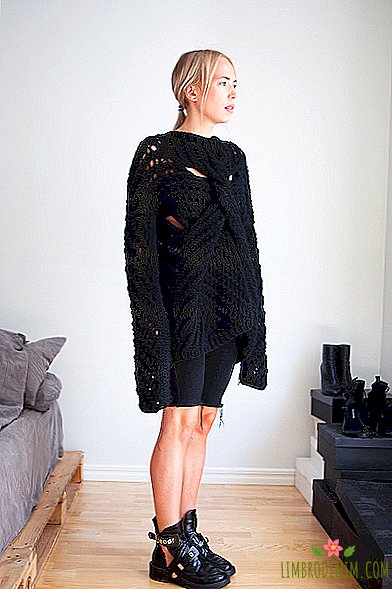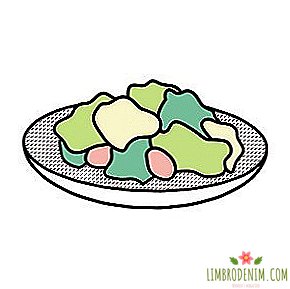Your Excellency: How to whiten your teeth without harm
Many are still attracted by the notorious Hollywood smile,but it is worth bearing in mind that teeth whitening is not always what it seems. It’s not so easy to understand: we are being offered laser whitening, home strips, and even professional cleaning disguised as bleaching. In addition, there is a perception that such manipulations will make the teeth sensitive and harm the enamels. It's time to figure out what's what.

How to return "your" color
Sometimes bleaching is mistakenly called professional teeth cleaning. Such "whitening" is easy to recognize - it costs about 1500-5000 rubles. For this amount, they often offer to return their enamel's “native” color, removing the plaque - but no more. With the present bleaching, the structure of the enamel itself is affected and it is lightened with several tones due to the chemical destruction of the pigment. Whatever it was, if you decide to whiten, first of all you need to undergo professional hygiene. To whiten teeth covered with a coating, it is impossible - and, perhaps, when you see the natural color of truly clean teeth, then decide that you do not need to whiten. Professional hygiene has no contraindications - on the contrary, it is recommended for everybody once or twice a year.
Scale Vita - the most common among dentists. It determines the color of the teeth and selects shades of fillings or crowns, and also compares the situation before and after bleaching. The most common shade - A3. On the scale, it looks yellowish, but in life it looks natural. Colors B1 and A1 - most often the result of chemical bleaching. It happens that a person comes with the color of A4 teeth and asks them to whiten, but after professional hygiene it turns out that the natural shade approaches A1 and doesn't bleach to anything.
The truth about whitening pastes
Whitening pastes have a very high RDA - or abrasiveness index. So, they do not wash the pigment from the inside of enamel, but mechanically remove the surface. If you like coffee, it will help to keep the color of the teeth relatively light and even create the illusion of whitening - however, the frequent use of such tools harms enamel. Whitening toothpastes can not be used continuously, and contraindications include tooth sensitivity, erosion, and wedge-shaped defects.
Whitening effect pastes may not be abrasive, but contain enzymes that destroy the pigmented bacterial plaque, papain or bromelain, as well as substances that prevent plaque and tartar formation, polydon and pyrophosphates. But, like abrasive, toothpastes with enzymes will only remove plaque and restore the natural color of the enamel. Anyone who follows hygiene and does not abuse coffee or red wine will most likely not notice the bleaching effect. By the way, brushes with the bleaching mode act according to the same principle: they can remove plaque from the surface, but enamel pigment is not.

How to bleach professionals
With this bleaching, the pigment is destroyed by the active substance - it is always hydrogen peroxide or carbamide peroxide. It is contained absolutely in all professional preparations for bleaching, and any lamps or lasers are just ways to activate the solution or gel. The greater the peroxide concentration, the higher the efficiency with shorter exposure. For example, strips for home whitening contain 6-10% hydrogen peroxide, in the room whitening Zoom, where light activation is used, is 25%, and in the Opalescence Boost system, 40%.
How does this happen: after the isolation of the mucous membrane, so that the whitening agent does not hit it, the doctor applies it to the teeth, and the patient sits for 15-20 minutes under the lamp or without it, depending on the method. The application is repeated two or three times, each time completely washing the composition. The procedure lasts an average of one and a half to two hours, most of which you just need to sit and wait. Before starting it is important to agree on conditional signals - you can not talk or turn your head. For example, you can raise your right hand to ask for saliva to collect, or to wave your left hand if there is an unbearable tingling sensation. Throughout the process, someone from the staff must be in the office. A light tingling is a variant of the norm, but severe pain cannot be tolerated; In this case, it is necessary to give a signal to the doctor to wash the composition from the teeth.
The cost of bleaching in Moscow is an average of 20-25 thousand rubles for the procedure with activation of the lamp. Contraindications include caries and erosion of enamel, drug intolerance, pregnancy, age up to 18 years, some common diseases. There are also relative contraindications, such as the presence of large fillings on the front teeth - they, unlike enamel, are not bleached, but they can be replaced with new ones. In case of hypersensitivity, the teeth should be prepared for bleaching, having saturated them with calcium and fluorine compounds.
What can be done at home
The most effective of the home methods is the use of a professional solution, which is issued by the dentist along with an individual cap. It is necessary every day to squeeze a certain dose of the solution into a mouthpiece and walk in it for some time - gradually, day after day, the result will appear. The concentration of the active substance is relatively low, but it is compensated by prolonged exposure. Contraindications for such bleaching are the same as for the cabinet, and it costs 10-15 thousand rubles, not counting the manufacture of a mouthpiece.
To home can be attributed, and whitening strips, pencils, rinses and everything else that you can buy without a prescription. As a rule, the concentration of the whitening agent will be very low (2-6%) - and the result is likely to be very weak. In general, the effectiveness of such systems is small, but according to the research, no harm was found. These devices can cost from a hundred rubles to a couple of hundred dollars, depending on the brand.

Whitening damage
At first glance it may seem that the higher and more effective the concentration, the more harmful. But this is not the case: scientists have demonstrated that in low concentrations, but with longer exposure, hydrogen peroxide adversely affects the enamel surface. That is, home whitening is still somewhat more harmful than the desk where high concentration is used, but in a very short time.
Before whitening, especially if you have sensitive teeth, it is necessary to carry out training - remineralization. It will make the enamel resistant to the effects of an acidic environment - otherwise bleaching may increase sensitivity or even provoke enamel erosion. When they say that whitening is dangerous, they mean exactly that; but if the enamel is strengthened, then its structure will be durable, and the whitening agent will destroy only the pigment. To do this, the dentist applies a special composition with calcium and fluoride on the teeth and recommends similar home remedies.
How long the effect lasts is up to you. After the procedure, you must follow the "white diet", that is, do not drink coffee, tea, red wine, do not eat red berries. The longer these rules are followed, the longer the effect lasts. Anyone who does not imagine the rejection of coffee, but wants white teeth, can drink through a straw - or install veneers. Such ceramic plates replace the outer layer of the tooth and due to this they can correct their shape and color. The color of the veneer will not change under the influence of tea or coffee, the teeth will always be white and will not darken. This version of "bleaching" is the most cardinal and expensive - but it will not need to be repeated.
Photo: eedzaa - stock.adobe.com, photobalance - stock.adobe.com, BestDent





